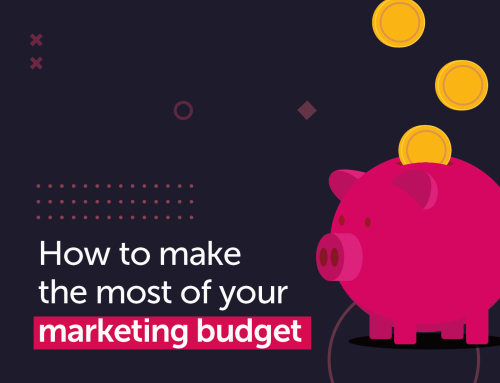What does success look like to you? And how can you tell if your business’ digital marketing campaigns are successful?
Perhaps you’re guided by how many likes or comments each social media post receives or the open rate you get for each e-newsletter. But how does this feed back into your overarching marketing strategy? And are you getting the most ‘bang for your buck’?
If these questions leave you a little stumped, it’s time to start measuring your return on investment (ROI) and using the results to your company’s benefit.
Show me the money!
ROI is big picture stuff. It’s the key indicator of whether your marketing efforts are making you a profit. If the time, money and effort you put into your digital marketing tactics exceed the results they’re giving you, it’s likely there’s a cog out of place in your overall marketing plan. And you’ll probably find yourself asking, is it even worth it?
Measuring ROI is one of the only ways to understand whether you’re allocating your marketing budget effectively. It helps you identify which areas need more attention and which ones are ticking along smoothly.
The best bit about ROI? It’s based purely on data. That’s right — there’s no guesswork involved, so you can let the numbers speak for themselves.

Metrics and their merits
First, you need to have a clear understanding of your goals to calculate ROI. After all, how can you work out if a campaign has been successful if you have no idea what success looks like for your business?
Business via new customers
For any sales team, new leads are a fundamental part of their 9–5. When your company’s goal involves obtaining as many new leads as possible, measuring ROI will include calculating how much you spend acquiring each new lead (cost per lead) and comparing this against the value of business generated from closed leads. If the cost of each lead is more than what you get from closing these leads, then you’re not getting a positive ROI.
Even if you have a positive ROI for new leads, it’s also worth calculating your lead close rate. If you’re closing far fewer leads than you’re receiving, you’ll likely be making a loss.
If your goal is to get people to convert (after viewing an ad, for example), reviewing your conversion metrics will indicate how successful you’ve been in accomplishing this aim. However, your business’ definition of conversion will depend on the actions you want your audience to take. Do you want them to follow a link to your website? Complete a sale? Sign up to a newsletter?
As one of the most popular metrics used to track ROI, conversion can be a goal for most marketing channels, including social media, PPC, email, blog posts and website design.
Business via existing customers
Do you know what the average order value is for your customers? Having a high volume of orders at minimum value is often less profitable and results in a negative ROI compared against a moderate quantity of orders at a reasonably high value. If you can up the value of each ‘order’ by even a small amount, this could result in huge boosts to your revenue.
Your customer’s lifetime value then tells you how much they’ll spend during their time as a customer of your business — think of it a bit like the net profit of their contribution to your company. This long-term perspective provides a different slant on setting goals for initial cost per acquisition and your ROI.
Transforming your ROI
Showing pure ROI for digital marketing can be tricky if you’re linking back to sales revenue. While your marketing can show you how many leads were generated, each lead still needs to be checked for quality and whether it’s been closed. Attributing your revenue to each lead can be a lengthy process, particularly if there’s a long decision-making cycle.
Yet, if you’ve measured your ROI, you’ll want to look at the results and work out how you can improve. Our top tips for achieving a higher return on investment for your marketing include:
- Setting clear and measurable goals with achievable objectives.
- Aligning your KPIs with your overall goals and with each different channel you use. If you don’t have KPIs in place, it’s impossible to know how close you are to achieving your goals!
- Running A/B tests to pinpoint which elements of each marketing campaign need attention.
- Continuously optimising your campaigns based on your findings.
Want to get the most out of your marketing? We can help you draw up a comprehensive strategy and set your marketing off on the right course, before bringing the strategy to life through our bespoke marketing campaigns.










